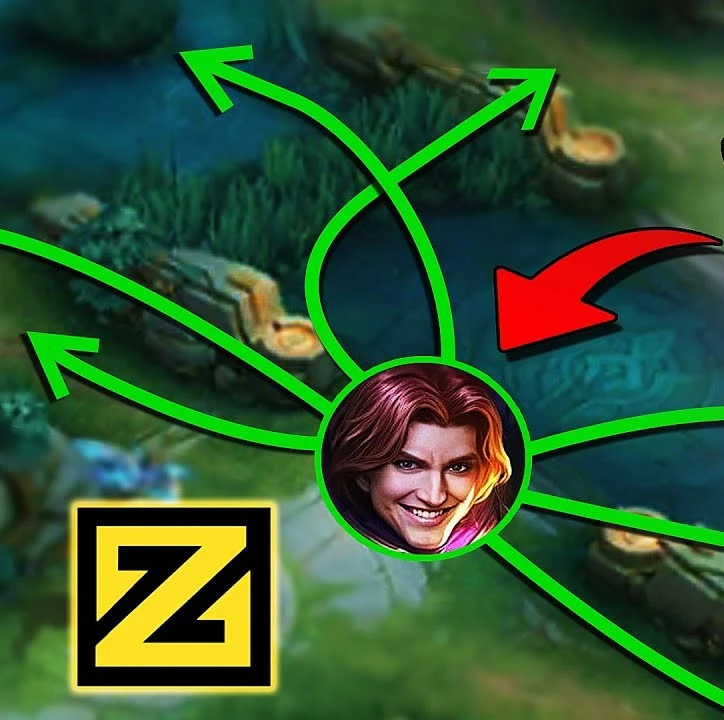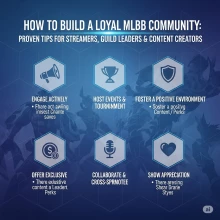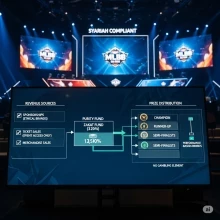
How to Perfectly Gank as the Roamer
Ganking as the Roamer is one of the most challenging roles in solo queue, but mastering it can significantly impact your games. Many players struggle with rotations and ganking efficiently, leading to missed opportunities or failed engagements.
I’ve got four-step process to execute perfect ganks in solo queue. Whether you're a beginner or an experienced player, these strategies will help you dominate the map.
Step 1: Planning Your Rotation – The Foundation of Effective Ganking
A roamer’s impact begins long before arriving in a lane. The difference between a game-changing gank and wasted time lies in two critical assessments: target selection and teammate synergy. First, evaluate lanes through a strategic lens—prioritize enemies who are overextended, lack escape tools, or scale dangerously into late game. The gold lane often presents the best opportunity, but blindly forcing ganks against turtling opponents only reveals your position and empowers enemy aggression elsewhere. Instead, shift to vision control or counter-rotations. Second, secure mid-lane cooperation. A roamer’s effectiveness plummets without follow-up, so assist your mage in clearing waves to enable their rotation. If they stubbornly refuse to collaborate after multiple attempts, adapt by executing swift, solo ganks to exploit unguarded lanes. However, abandon the mid lane immediately if urgent threats emerge, such as jungle invades or a collapsing gold lane.
Step 2: Reading the Map – Anticipating the Unseen Threats
Map awareness separates reactive roamers from proactive playmakers. Before committing to a rotation, scan for four invisible variables:
Jungle Vulnerabilities: Against invade-heavy comps (e.g., Fanny, Khufra), delay your gank to safeguard your jungler or secure vision near objectives.
Shadow Rotations: If the enemy mid or roamer tails your movement, abort the original plan. Either punish their overcommitment by cutting them off or execute a lightning-fast gank before reinforcements arrive.
The Missing Roamer: Assume an absent enemy roamer is setting an ambush. Stick to safer paths and leverage allies as bait to flip the trap.
Jungler Tracking: An unaccounted-for enemy jungler transforms every gank into a potential disaster. Limit time spent in lane and disengage if their location is unknown.
This constant vigilance prevents ganks from backfiring and turns rotations into calculated risks rather than gambles.
Step 3: Executing the Gank – Precision Over Panic
The moment of engagement demands surgical precision. Begin by predicting enemy movements through subtle cues, like minion health bars—laners often step forward to last-hit, creating a window to strike. Optimal positioning is key: approach from flanking angles to cut off escapes, but avoid revealing yourself prematurely, which allows enemies to freeze waves under turret. Patience is vital; if allies are distracted farming, delay your initiation until they’re ready to engage. Most critically, monitor enemy cooldowns. Bait out mobility skills or crowd control before committing, and use manual camera swipes to verify spell usage the minimap won’t show. A successful gank hinges on exploiting these microscopic advantages.
Step 4: Post-Gank Rotations – Capitalizing or Recovering
A gank’s aftermath determines whether you snowball or stagnate. On success, immediately transition to vision control—camp nearby bushes to zone enemies or enable turret pushes, but remain wary of overstaying. The moment the "eye" icon appears with a delay, assume you’re spotted and reposition. If the gank fails, retreat without hesitation. Lingering creates map imbalances, allowing enemies to overwhelm other lanes. Should your mid laner stubbornly overstay, prioritize defending their turret over babysitting, even if it means abandoning them. For turtle contests, weigh your team’s strength; when outmatched, trade objectives by ganking opposite lanes rather than fighting losing battles.
The Roamer’s Mindset: Adaptability Wins Games
While this framework provides structure, rigid adherence leads to predictability. The best roamers blend these principles with adaptability—sometimes breaking rules to exploit impatient enemies or compensate for unreliable teammates. Each game demands unique solutions, but mastering these four steps ensures you’re always the catalyst for victory, not the liability.
Recent Posts

Why MLBB Still Dominates Wild Rift in SEA: A Data-Driven Comparison of Mobile MOBA Success

The Evolution of MLBB: What 2025’s Game Updates Reveal About the Future of Mobile Esports

From Casual to Creator: How to Turn Your MLBB Passion into Profit with Content, Community & Strategy

Affiliate Systems in MLBB: Ethical Monetization Strategies for Gaming Influencers & Community Leaders

How to Build a Loyal MLBB Community: Proven Tips for Streamers, Guild Leaders & Content Creators

Secrets from SEA Champs: What Malaysian MLBB Teams Get Right About Strategy, Synergy & Success

MLBB Tournament Blueprint: Structuring Syariah-Compliant Prize Pools for Ethical Competitive Play

Mobile Legends Inside the Mind of a Mythic Player: Ranked Climb Psychology, Strategy & Meta Mastery in 2025

Reviving Forgotten Heroes: How to Make Bane Viable Again in the 2025 Meta
